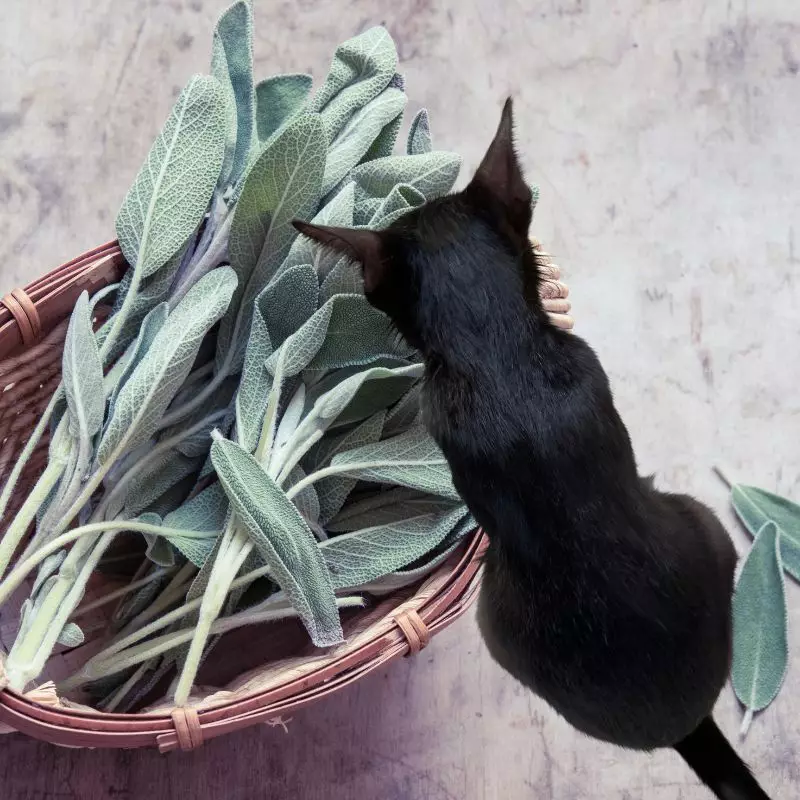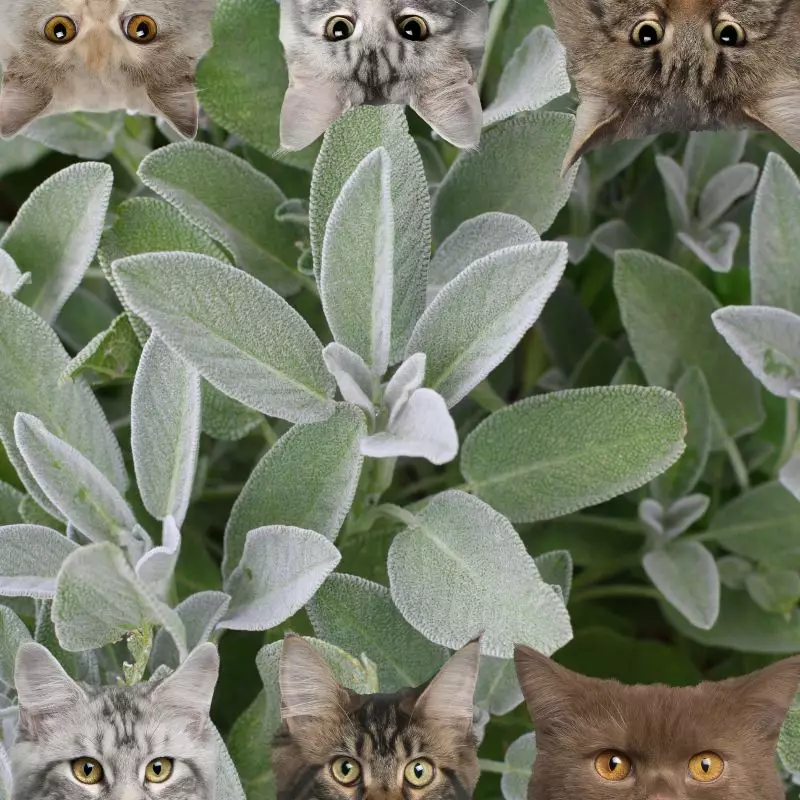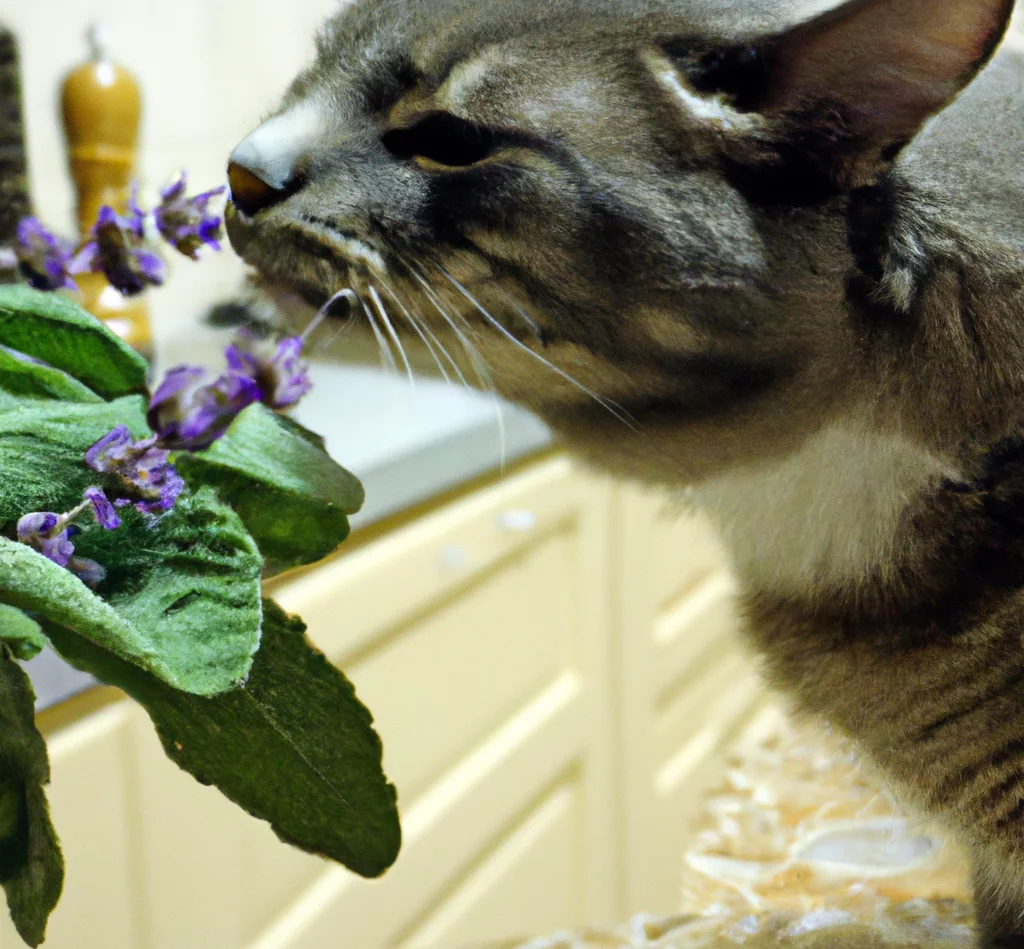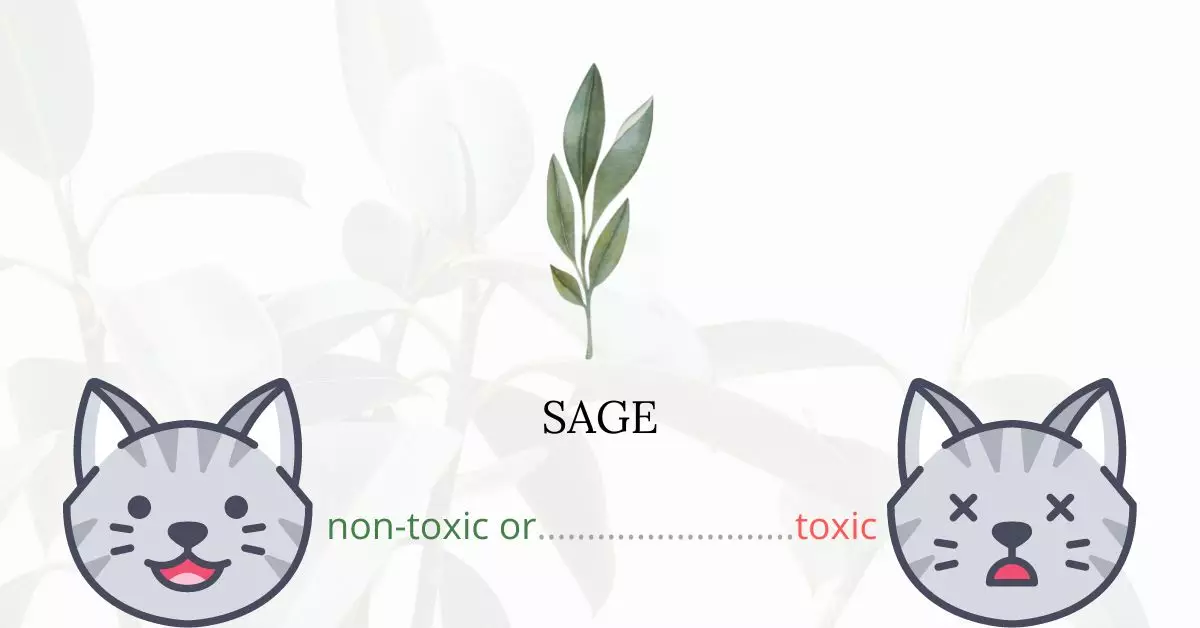No, sage is not toxic to cats. In fact, it is one of the few herbs that is considered safe for felines to consume.
This article was crafted in collaboration with a team of experienced DVMs (doctors of veterinary medicine) to ensure its accuracy. Through their insights and our extensive research, including references from high-authority sources such as the ASPCA and PetMD, we provide up-to-date and reliable information about the potential risks and safety of various plants for cats, with a focus on sage in this instance.
Not only is sage deemed non-toxic for cats, but it is also safe for other pets like dogs and horses. Hence, incorporating sage into dishes or cultivating it in home gardens poses no threat to our beloved pets.
Can Cats Eat Sage?

Sage is safe for cats to eat in moderation. There are a number of food ingredients that are not suitable for cats, so check that all ingredients in the dish before feeding any to your cat.
Members of the mint family, which also includes catnip, include sage plants. Cats can safely consume most of the plants in this family.
However, sage essential oils can be harmful to cats. Never warm essential oils in the presence of your cat. When heated, some essential oils can irritate the skin, eyes, and respiratory system.
Sage essential oils should also be avoided by your cat. Your cat lacks the liver enzymes required to break down some of the compounds in sage oil and other substances, resulting in toxicity.
What is Sage?

Sage, also referred to as Salvia officinalis in botanical terminology, is a hardy perennial plant with lovely grayish green leaves. It produces spring flower spikes in a range of colors, including purple, blue, white, and pink. It can be grown in a vegetable garden or as a perennial border indoors.
Sage is also known as garden sage or common sage. This herb is one of the simplest perennials to grow. It is a semi-shrubby plant has wooly, gray-green, fragrant, ovate leaves that can grow up to 4 inches long. The leaves add an earthy and mildly peppery flavor to food and are frequently used fresh or dried.
Keeping Cats Away From Sage

The quickest solution is to relocate your houseplants. A high vantage point is ideal to keep your plants safe from clawed paw. Large, heavy plants may need to be kept in a separate room, and homes with limited sunlight and wall space will almost certainly necessitate more creative solutions.
Premade repellent sprays for houseplants are another effective way to protect your plants. These sprays contain ingredients that cats find repulsive, either in taste or smell, and they are unlikely to be returned for a second visit.
Bitter apple spray is a popular product for protecting houseplants. It is safe for pets and plants, but its bitter flavor will catch any leaf-munching cat off guard.
It is highly advised to use the bitter spray up to twice a day at first. After using the sprayer consistently for about two weeks, your cats will probably have gotten the hang of it and you can cut back on how often you spray your plants.
Plants to Avoid For Your Cats
If you are a cat owner and unsure if the plants growing in your yard are harmful to your cats, check out this list of toxic plants for cats. You can also check our list of non-toxic plants for cats.





